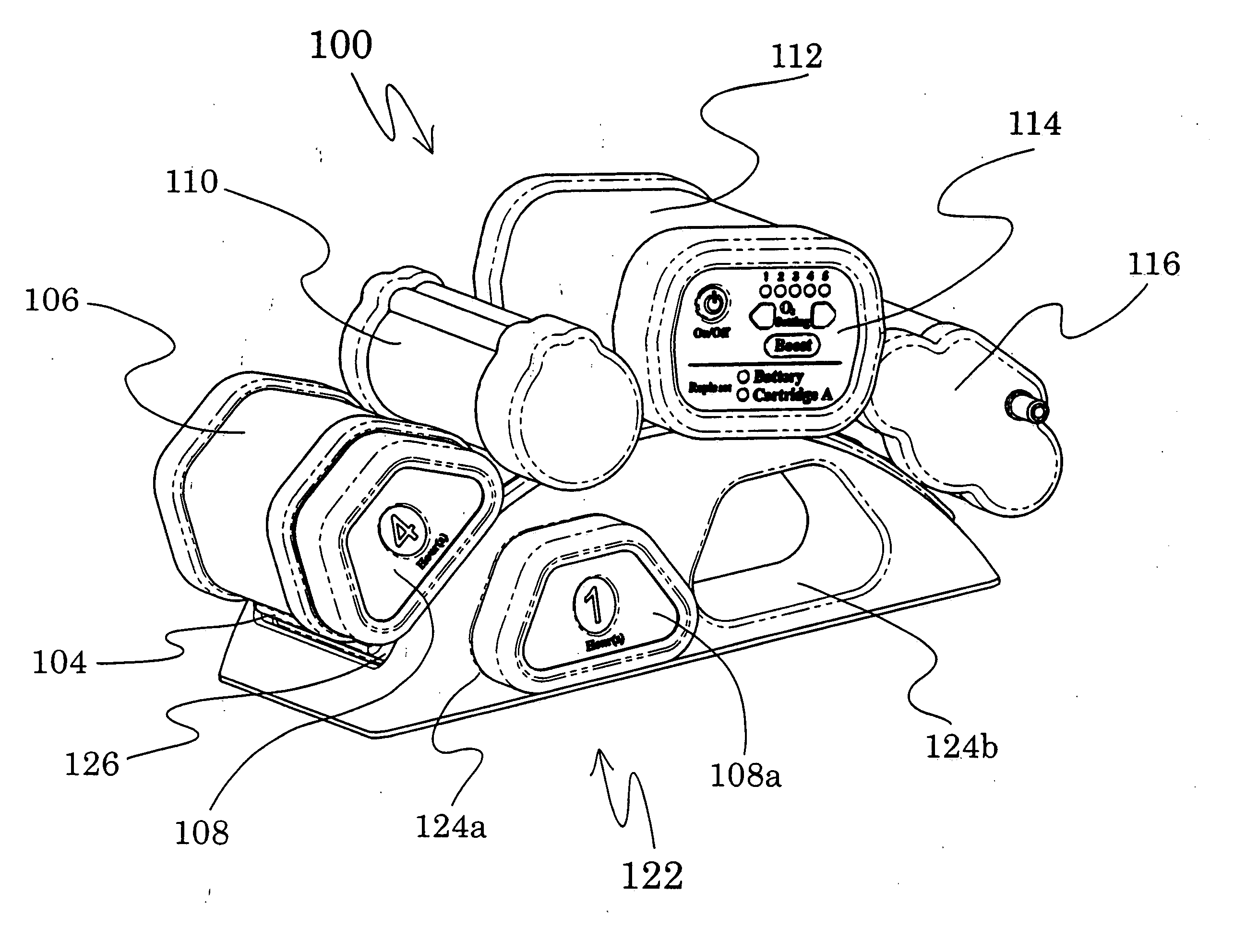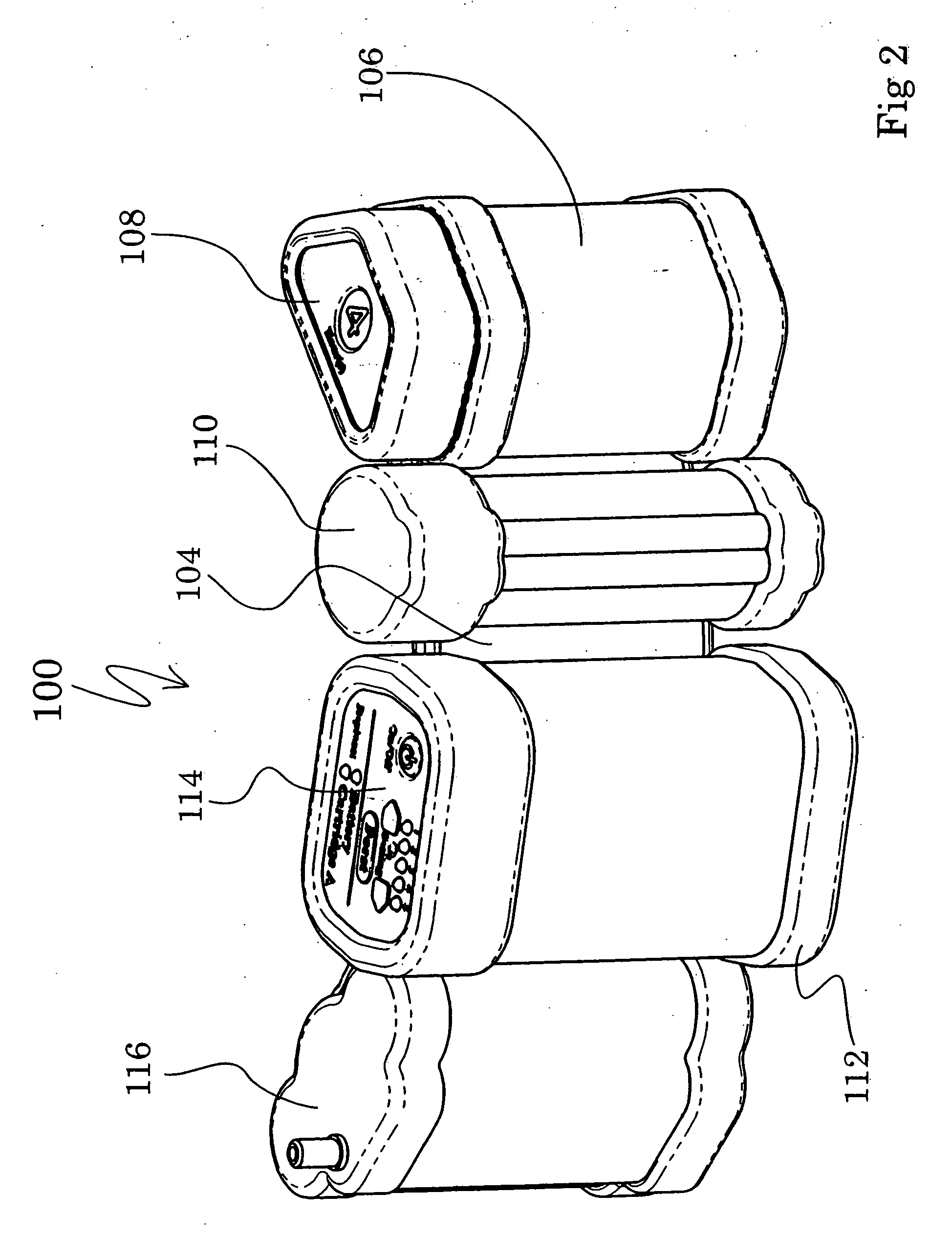Personal oxygen concentrator
a technology of oxygen concentrator and oxygen concentrator, which is applied in the direction of electrostatic separation details, ratio control, multi-way valve, etc., can solve the problems of large electricity consumption, large volume, and drawbacks of home oxygen concentrators
- Summary
- Abstract
- Description
- Claims
- Application Information
AI Technical Summary
Benefits of technology
Problems solved by technology
Method used
Image
Examples
Embodiment Construction
[0035] The current invention relates to separation of gases using vacuum swing adsorption. Specifically, disclosed is an oxygen concentrator for a patient who requires a source of oxygen. The present invention is further explained with reference to the drawn figures in which like structures are referred to by like numerals throughout the several views.
Overview—Oxygen Concentrator 100 (FIGS. 1-4)
[0036]FIG. 1 is a front view showing patient P with oxygen concentrator 100 and oxygen delivery tube 102. Oxygen concentrator 100 is a small unit which utilizes vacuum swing adsorption to separate oxygen from the ambient air around patient P. Oxygen concentrator 100 is compact and light so as not to interfere with the ambulatory movement of patient P, and can produce a product stream of gas containing a range of eighty-five to ninety-five percent oxygen.
[0037] Oxygen delivery tube 102 is a polymer tube or similar oxidation resistant structure, which extends from oxygen concentrator 100 to...
PUM
 Login to View More
Login to View More Abstract
Description
Claims
Application Information
 Login to View More
Login to View More - R&D
- Intellectual Property
- Life Sciences
- Materials
- Tech Scout
- Unparalleled Data Quality
- Higher Quality Content
- 60% Fewer Hallucinations
Browse by: Latest US Patents, China's latest patents, Technical Efficacy Thesaurus, Application Domain, Technology Topic, Popular Technical Reports.
© 2025 PatSnap. All rights reserved.Legal|Privacy policy|Modern Slavery Act Transparency Statement|Sitemap|About US| Contact US: help@patsnap.com



